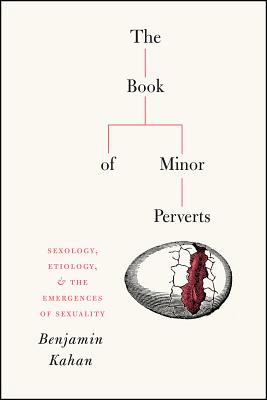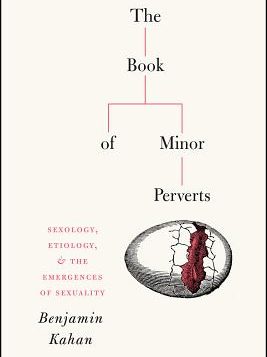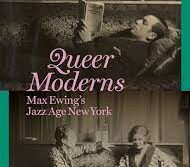 The Book of Minor Perverts: Sexology, Etiology, and the Emergences of Sexuality
The Book of Minor Perverts: Sexology, Etiology, and the Emergences of Sexuality
by Benjamin Kahan
U. of Chicago Press. 232 pages, $22.95
HISTORIANS are fairly well agreed that Western sexology—the scientific study of human sexuality—arose in the late 19th century. Philosophers since antiquity had theorized about animal reproduction. Worldwide, physicians since late antiquity had written about the treatment of infertility, impotence, genital disorders, and venereal diseases. All variety of writers and illustrators had depicted human sex and the arts of love—on the humblest of walls to the most lavishly illustrated books. However, the emergence of a scientia sexualis as opposed to an ars erotica is largely a 19th-century phenomenon.
This is one of the most persuasive claims of Michel Foucault in his hugely influential The History of Sexuality, Volume 1 (Histoire de la sexualité 1: La volonté de savoir, 1976). Foucault’s work had a major impact on my historical work and for LGBT studies in general starting in the 1980s. His ideas formed one of the foundations of the emerging field, along with feminist theory—which were often in tense conflict. Some of his other historical claims, as well as the reasons for and significance of the rise of 19th-century sexology, have been far more contested. Two of the foundational theorists in LGBT Studies, Eve Kosofsky Sedgwick and David Halperin, brilliantly elaborated Foucault’s ideas for the emerging field. Halperin’s Saint Foucault: Towards a Gay Hagiography (1995), written in the thick of the AIDS crisis and of academic battles over “essentialism” versus “social constructionism,” made an impassioned case for the political utility of Foucault’s ideas to the newly emerging Queer movement.
These three scholars are the touchstones for Benjamin Kahan’s The Book of Minor Perverts: Sexology, Etiology, and the Emergences of Sexuality. The title led me to expect a work of medical history, which it is not. This is more a work of literary criticism, relying on the context of sexological theories and an interpretive conceit—his “historical etiological approach”—to analyze a number of literary texts from the late 19th to early 20th centuries.
Kahan examines four broad areas of what he calls “minor perversions” (or simply sexualities beyond the stable binaries of “homo-” and “heterosexual”): situational homosexuality (specifically lesbianism); atavistic sexuality in hot climates; the sexuality of the “fairy”; and the standardization of sexuality under capitalist industrialization. In each case he relies on pairs of literary works from the 20th century, with the exception of the 19th-century pamphlets of a very curious and obscure “sexual magician,” as Kahan calls him: Paschal Beverley Randolph. Thus most of the sources that he cites could not have had an impact on the “golden era of sexology” of the late 19th century. (Randolph’s writings on sexual magic are simply too obscure, but are a fascinating discovery, and read rather like the grandiose pronouncements on Dr. Bronner’s Castile Soap.)
Kahan’s cases point to problems in the field of sexology but miss the mark historically. He sets up the straw argument that late 19th-century sexology brought about the “great paradigm shift” toward establishing homosexual and heterosexual identities as the only two forms of sexuality. This is just not the case. Even current psychiatric nosology (in the Diagnostic and Statistical Manual of Mental Disorders [DSM5]) has a range of “paraphilias”: “sexual perversion” diagnoses passed down from 19th-century sexology. His literary analyses of the creative texts could have stood on their own (without the attempt at a historical argument), except that his interpretations are often unconvincing in his attempt to work toward some theoretical aim.
Kahan’s final chapter, “After Sedgwick: The Gordian Knot of the Great Paradigm Shift,” pivots away from the literary analysis of the previous chapters. Instead, it provocatively rattles the cage in which he placed himself to begin with. Eve Sedgwick did not posit the “Great Paradigm Shift” (i.e., the emergence of the homo-hetero divide) as a hard fact in sexological history but instead as an interpretative lens for examining gender dynamics in Victorian literature. However, her work, published in the late 1980s, was part of the heated debates in the emerging field of LGBT Studies. Kahan tries to unravel some of these in his final chapter, which probably deserves a monograph in its own right. One issue is historiographical: Did homosexuality as an identity emerge only in the late 19th-century, coinciding with the sexological coining of the terms “homosexual” and “heterosexual”? (This was David Halperin’s strong constructivist argument in 1990’s One Hundred Years of Homosexuality.) Or had it emerged in the 18th century, as argued by historians of “sodomites” and effeminate male “mollies”?
In complex ways, these historical questions overlap with another debate that was raging at the time: Is same-sex attraction essential (whether biologically ingrained or not), and has it always existed, only under different names? Or is it socially constructed, such that the differently named manifestations of homo-eroticism are really different phenomena? An important subset of this question is whether gender, age, race, class or any other identity element also establishes distinct sexualities. Some concrete examples: Was age-stratified “Greek love” simply an ancient example of homosexuality, or was it something altogether different? Were “two-spirit” Native Americans gay, or transgender, or their own distinct cultural form of sexuality and spirituality? Were “Boston marriages” between wealthy women simply lesbian relationships in disguise? Are working-class men who have sex with men really just gay? Fortunately, these and other topics remain areas of theoretical contention and continued investigation, thanks to researchers uncovering new documents, but also examining old ones in queer new ways.
Vernon Rosario is a historian of sexuality and an Associate Clinical Professor of Psychiatry at UCLA.





